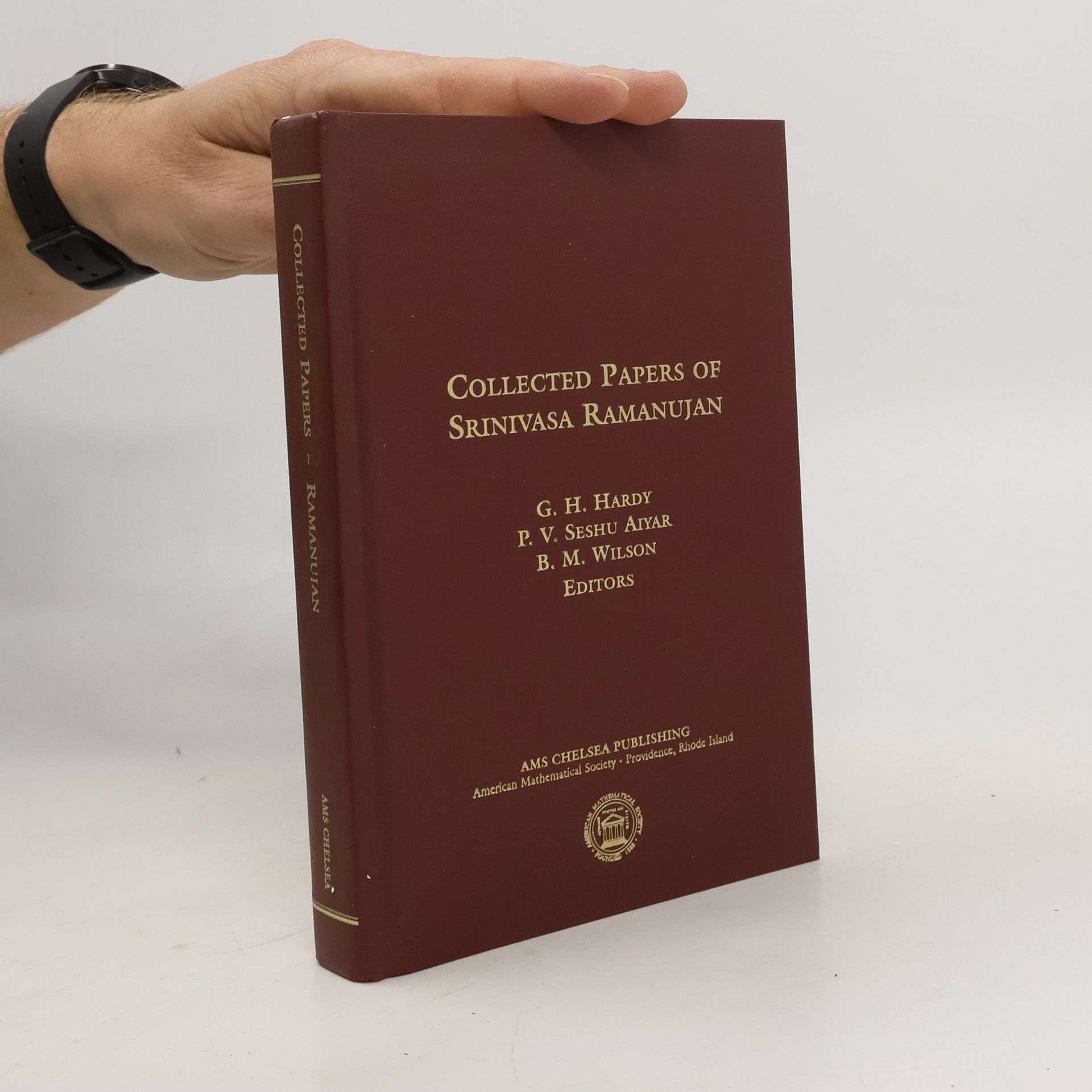The influence of Ramanujan on number theory is without parallel in mathematics. His papers, problems and letters have spawned a remarkable number of later results by many different mathematicians. Here, his 37 published papers, most of his first two and last letters to Hardy, the famous 58 problems submitted to the Journal of the Indian Mathematical Society, and the commentary of the original editors (Hardy, Seshu Aiyar and Wilson) are reprinted again, after having been unavailable for some time. In this, the third printing of Ramanujan's collected papers, Bruce Berndt provides an annotated guide to Ramanujan's work and to the mathematics it inspired over the last three-quarters of a century. The historical development of ideas is traced in the commentary and by citations to the copious references. The editor has done the mathematical world a tremendous service that few others would be qualified to do.
Srinivasa Ramanujan Aiyangar Libros
Srinivasa Ramanujan fue un matemático indio autodidacta cuya casi total ausencia de formación formal en matemáticas puras ocultaba contribuciones extraordinarias al análisis matemático, la teoría de números, las series infinitas y las fracciones continuas. Aislado de la comunidad matemática centrada en Europa de su tiempo, Ramanujan redescubrió independientemente teoremas conocidos y produjo trabajo original. Su genio natural, considerado a la par de Leonhard Euler y Carl Friedrich Gauss por G. H. Hardy, condujo a casi 3.900 resultados, la mayoría de los cuales han sido probados correctos. Sus inconvencionales ideas continúan inspirando una gran cantidad de investigación matemática.



The fifth and final volume to establish the results claimed by the great Indian mathematician Srinivasa Ramanujan in his "Notebooks" first published in 1957. Although each of the five volumes contains many deep results, the average depth in this volume is possibly greater than in the first four. There are several results on continued fractions - a subject that Ramanujan loved very much. It is the authors wish that this and previous volumes will serve as springboards for further investigations by mathematicians intrigued by Ramanujans remarkable ideas.